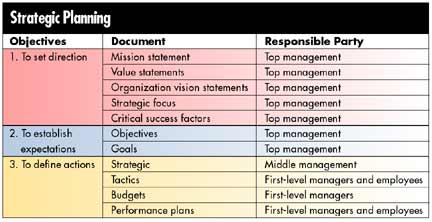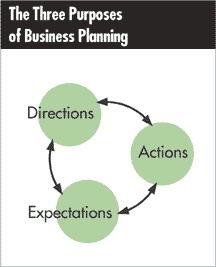Creating Organizational Excellence--Part Five
H. James Harrington
jharrington@qualitydigest.com
This is the fifth and final
column in a series about organizational excellence, which
comprises five elements: process management, project management,
change management, knowledge management and resource management.
When I talk about “resource management,” I’m
using the term in its broadest sense and mean the management
of all resources and assets available to an organization.
This includes stock, managers, employees, money, suppliers,
inventory, boards of directors, alliance partnerships, real
estate, knowledge, customers, patents, investors, goodwill
and facilities. Effective resource management is one of
the most critical and complex activities within any organization.
Considering its complexity, you might ask, “Where
do you start?”
There’s no right answer. However, I like to start
with management--specifically, selecting the right management
team--because it’s so critical to every organization.
There’s no substitute for experienced, qualified,
proven executives. Management is the first thing that professional
investors examine. What are the executives’ track
records? Have they led other successful organizations? Are
they visionaries? Do they attract successful managers to
their team? A good executive offering a fair product will
have a successful business. (Just look at the amazing turnaround
Lou Gerstner led IBM through during the 1990s.) On the other
hand, a mediocre executive offering a good product has a
high probability of leading the organization into bankruptcy.
Some of the things that must be considered in resource
management are:
 Good governance
Good governance
 Staff resources
Staff resources
 Product and service mix
Product and service mix
 Suppliers and alliance partners
Suppliers and alliance partners
 Financial status
Financial status
 Research and development
Research and development
This list includes only a few of an organization’s
resources and/or assets. We could also discuss money, equipment,
inventory, customer goodwill, facilities, patents and other
topics.
Looking at the varied resources, you might wonder what
approach best manages all of them. The answer is strategic
planning, which defines how the organization will use its
resources to optimize value-added opportunities for its
stakeholders. The organization must determine the best use
of its limited resources. Strategic plans put an organization
in the clearest and best possible position to compete in
this complex, changing world. They align the organization’s
resources toward a common business objective that sets it
apart from its rivals. In terms of customer service and
value provided, strategic plans define the organization’s
external focus and identify areas in which it must excel
in order to succeed. A well-crafted plan can provide the
roadmap to success and let each individual know how he or
she can contribute to the results.
A thoughtfully developed strategic plan encourages creativity
and communication. It mobilizes the efforts of the total
organization. It provides competitive insight into your
business field and develops buy-in and commitment to the
organization’s short- and long-term objectives.
However, in most organizations, management usually prepares
a strategic plan, updates it a couple of times a year, shares
it with just a privileged few and then files it away in
the corporate vault so that competitors won’t get
their hands on it. Unfortunately, this policy prevents the
plan from accomplishing its true objective of uniting the
organization and focusing on a set of common goals. It’s
likely that your competition already has a good idea of
what your strategic plan entails. You’re keeping your
employees in the dark.
A strategic plan includes three main objectives that support
11 documents.

The most important thing to remember about resource management
is that it must not be an afterthought but rather the basis
upon which all executive decisions are made. To excel at
resource management requires much planning, coordination,
reporting and continuous refining. Too many successful organizations
manage their operations by throwing more resources at them.
They may be successful with this approach as long as they
have very little competition, but even the giants fall if
they fail to do an outstanding job of resource management.
Just look at what happened to Big Blue.
Jack Welch, former CEO of General Electric, summed up
the correct attitude toward resource management when he
said, “The essence of competitiveness is liberated
when we make people believe that what they think and do
is important--and then get out of their way while they do
it.”

H. James Harrington is CEO of the Harrington Institute
Inc. and Chairman of the Board of four other companies.
He has more than 45 years of experience as a quality professional
and is the author of 22 books. Visit his Web site at
www.harrington-institute.com.
Letters to the editor regarding this column can be sent
to letters@qualitydigest.com.
|